As part of our disaster recovery service, we regularly remove and collect smoke and fire damaged paintings for restoration. These incidents can be anything from small isolated fires to full scale house fires, not only impacting the contents but the entire structure of the building. No matter the severity, this is often an emotional experience for the owner.
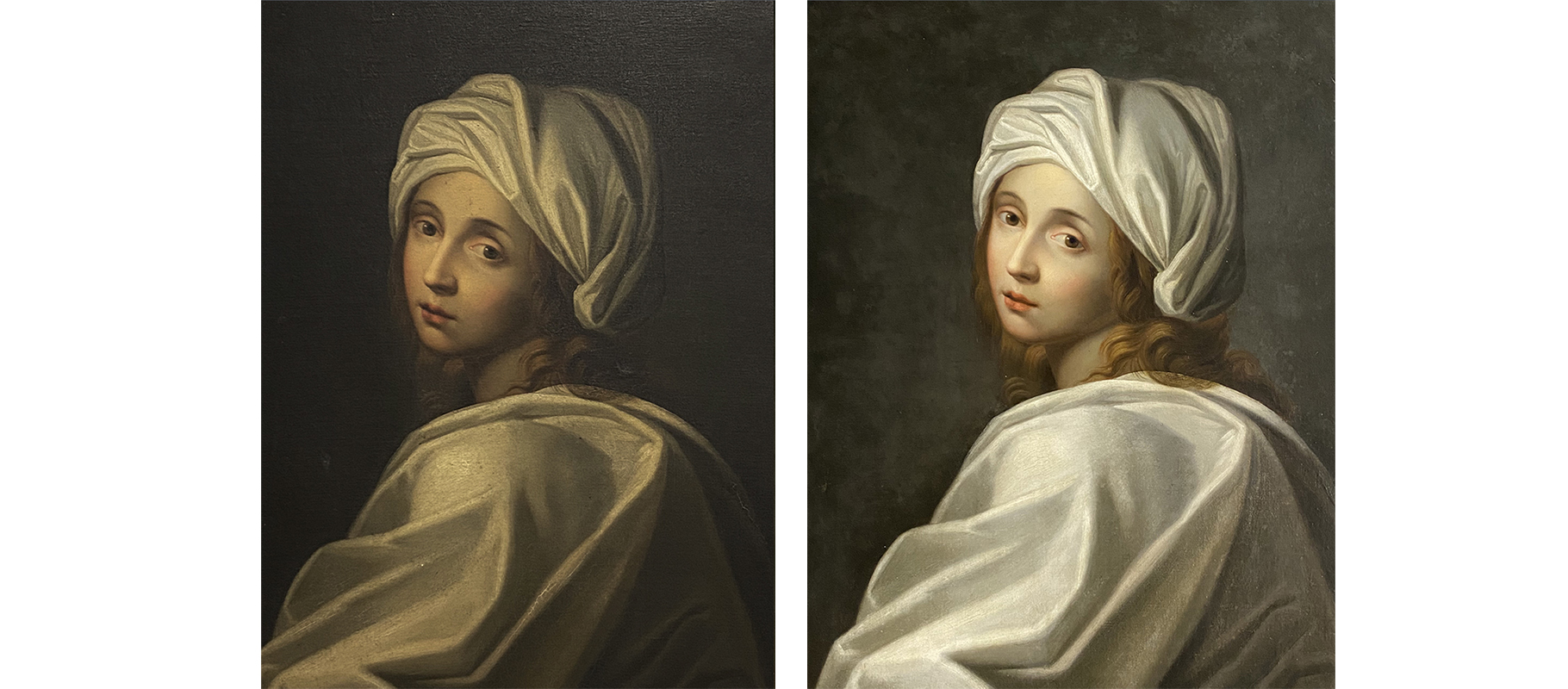
As well as typical signs of soot, smoke odour, heat impact and burns, fire damaged paintings often suffer from secondary issues. Predominantly, this is caused by exposure to the water or moisture used to extinguish the flames, mould can later develop from paintings that have been saturated. Tears and punctures may also occur due to falling debris or the subsequent removal process.
 Above: a fire damaged 17th century portrait, before and after restoration by our conservators
Above: a fire damaged 17th century portrait, before and after restoration by our conservators
When faced with a fire damaged artwork, it can be tempting to wipe the soot and debris away yourself. However, this can cause further damage, including abrasions and loss of unstable paint. These issues will result in further restoration treatments being required. As such, paintings will benefit more by being left untouched until they arrive in our studio.
 Above: a fire damaged oil painting, before and after restoration by our conservators
Above: a fire damaged oil painting, before and after restoration by our conservators
How to save a fire damaged painting
- Remove the artwork with caution from the fire damaged area
- Remove paintings from rooms if they have raised humidity levels as soon as possible
- Keep the painting in its frame, if it is safe to do so
- Store the painting in a clean and dry environment
- Be careful not to lean the canvas against uneven surfaces
- Lie the artwork flat and do not pile artworks on top of each other
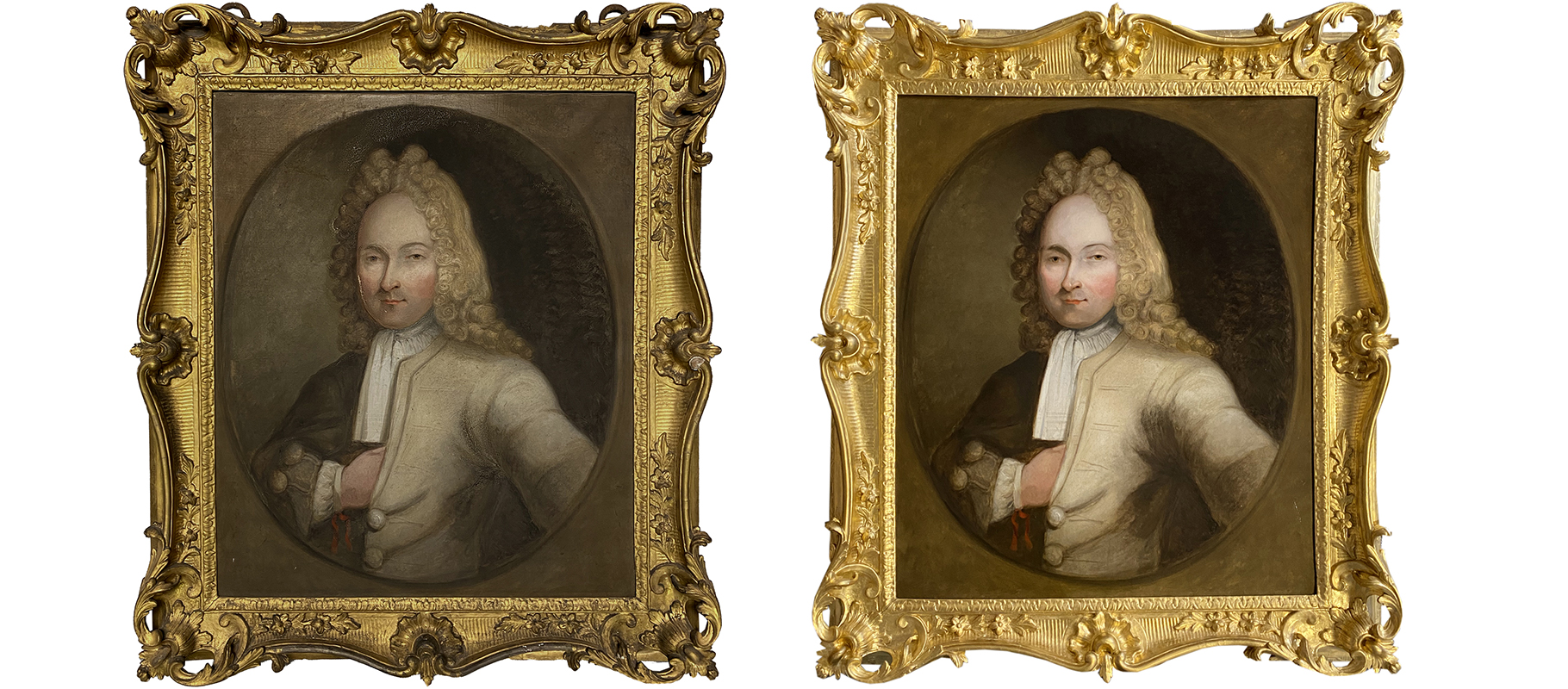
- If a painting has become water damaged, allow it to dry out naturally
- Don’t leave paintings in rooms that have industrial drying units operating
- Don’t attempt to wipe the soot from the painting with cloths
- Don’t attempt to bend warped stretcher bars back into place
- Don’t wrap soot and water damaged paintings in bubble wrap/plastic for long periods of time
- Contact us any time should you need advice and guidance as to what to do, what not to do, as well as what actions and steps are best to take
 Above: a fire damaged 18th century portrait before and after restoration by our conservators
Above: a fire damaged 18th century portrait before and after restoration by our conservators
Historic smoke damage
Our easel painting conservators are well-versed in smoke damage, as many historic paintings have been exposed to open fireplaces and nicotine. Throughout the decades or centuries, airborne smoke and soot deposit onto the painting, becoming embedded. This type of discolouration requires a sensitive removal, reviving the colour that has been lost under a dark surface in the process.
 Above: detail of a smoke damaged portrait, before and after restoration by our conservators
Above: detail of a smoke damaged portrait, before and after restoration by our conservators
When faced with fire damage, our conservators ensure the artworks are cleaned thoroughly with a tested and tailored solution. This is important as smoke and soot can harbour acidic elements, causing further deterioration if left untreated.

Although the impact of a fire can appear devastating at first sight, there is often a full oil painting hiding behind the black exterior. House fires lead to the most extreme form of smoke discolouration, but the damage can be treated and the painting restored with conservation techniques and treatments.
 Above: close up of a painting being cleaned in our studio
Above: close up of a painting being cleaned in our studio
Restoring fire damaged paintings
First, the surface is tested so that the optimal solution can be created by one of our conservators. They measure the sensitivity of the paint, varnish as well as the degree of contamination the painting has incurred.
 Above: all artworks are assessed prior to conservation treatments being carried out
Above: all artworks are assessed prior to conservation treatments being carried out
The surface is then cleaned with small cotton swabs, sometimes followed by a full varnish removal to eradicate any embedded smoke and dirt. The swab method is important, as it allows our conservators to clear less than an inch at a time before swapping out the cotton tip – making sure that no contamination can spread as it is removed. The process may be repeated depending on the amount of soot and smoke contamination.

Unfortunately, some fire damaged oil paintings have issues beyond a discoloured surface. The extreme heat can lead to blistering, severe cracks, flaking and warping of the stretcher bars. The change in tension caused by the heat and moving stretcher may lead to tears and distortions.
 Above: one of our conservators restoring a discoloured oil painting
Above: one of our conservators restoring a discoloured oil painting
All of these issues can be resolved through conservation treatments, including consolidation of disturbed/cracked paint, repairing tear and puncture damage by joining the individual canvas fibres one-by-one, retouching the areas of paint loss sympathetically with conservation pigments and resins, and re-stretching the canvas onto stable stretcher bars. Even the most alarming damage can often be fully resolved by our conservation team.
 Above: a torn oil painting, before and after restoration by our conservators
Above: a torn oil painting, before and after restoration by our conservators
How can we help?
If you have any questions about restoration, our team is always happy to help. Email us via [email protected] or call 0207 112 7576

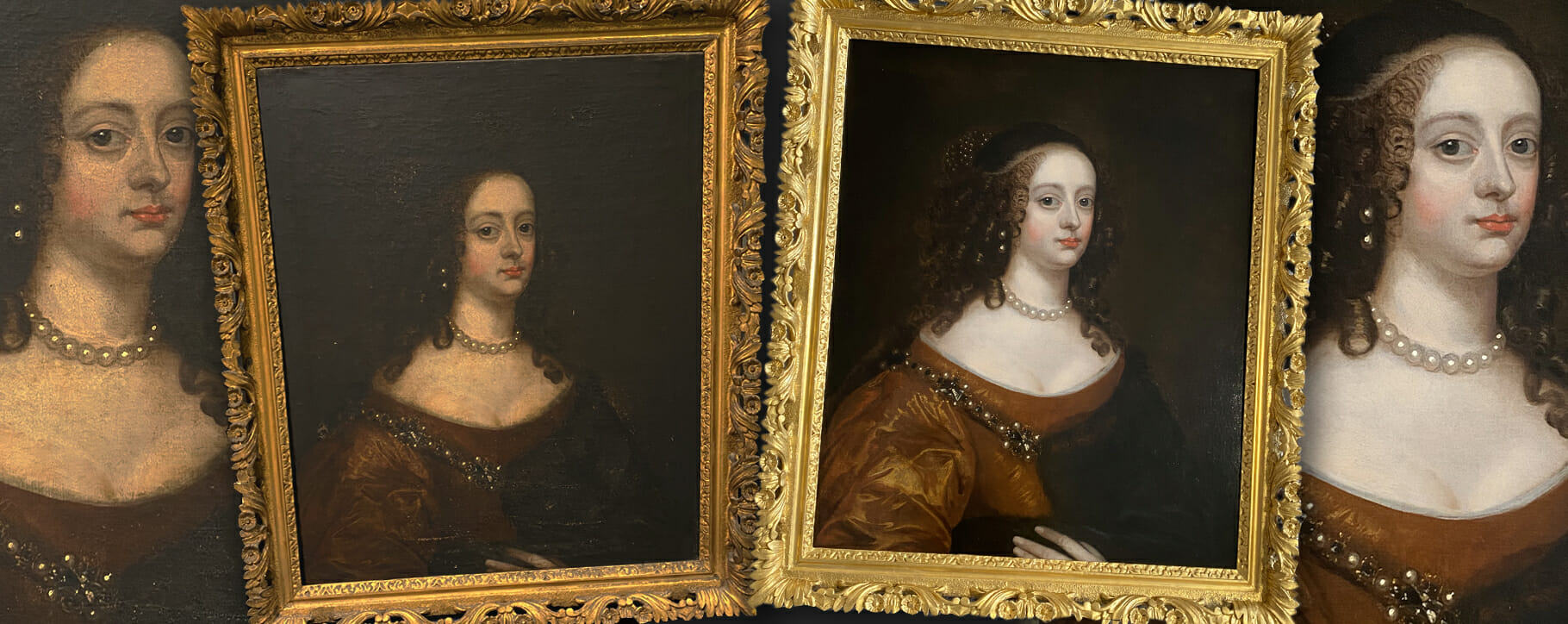 Above: a fire damaged 17th century portrait, before and after restoration by our conservators
Above: a fire damaged 17th century portrait, before and after restoration by our conservators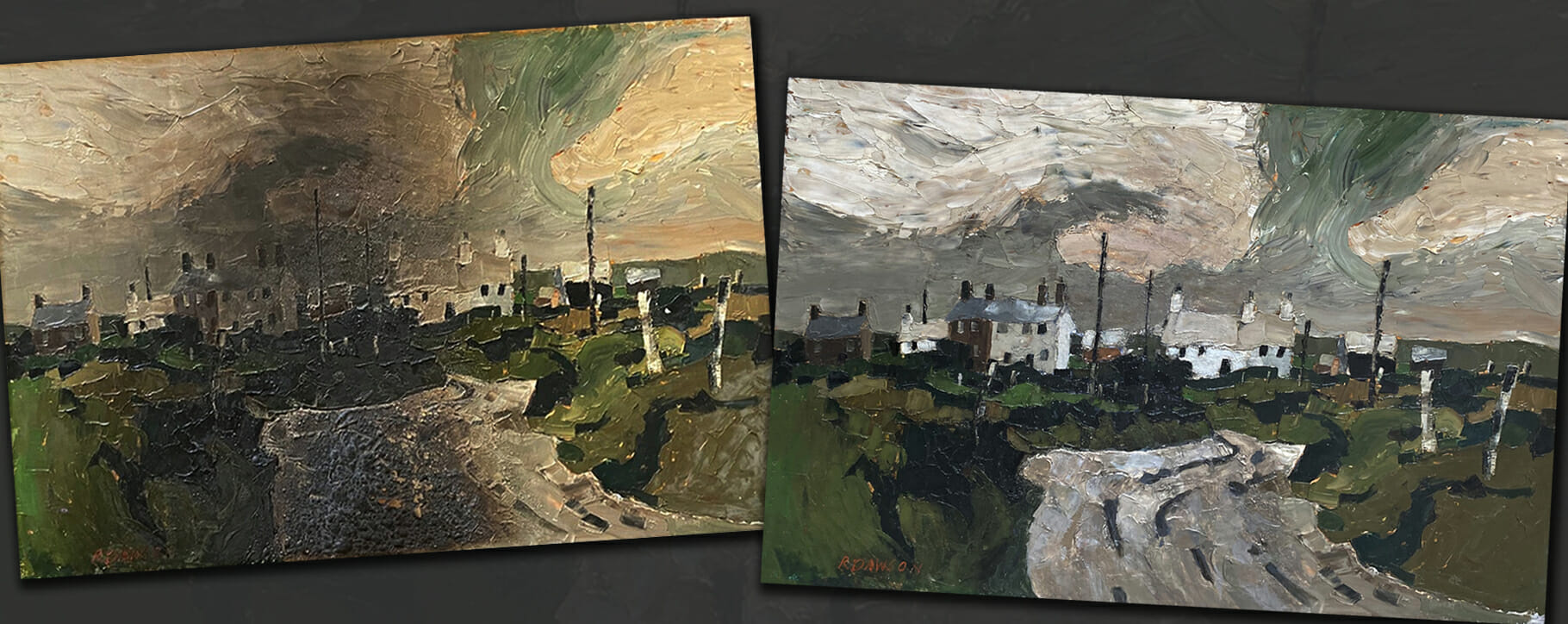 Above: a fire damaged oil painting, before and after restoration by our conservators
Above: a fire damaged oil painting, before and after restoration by our conservators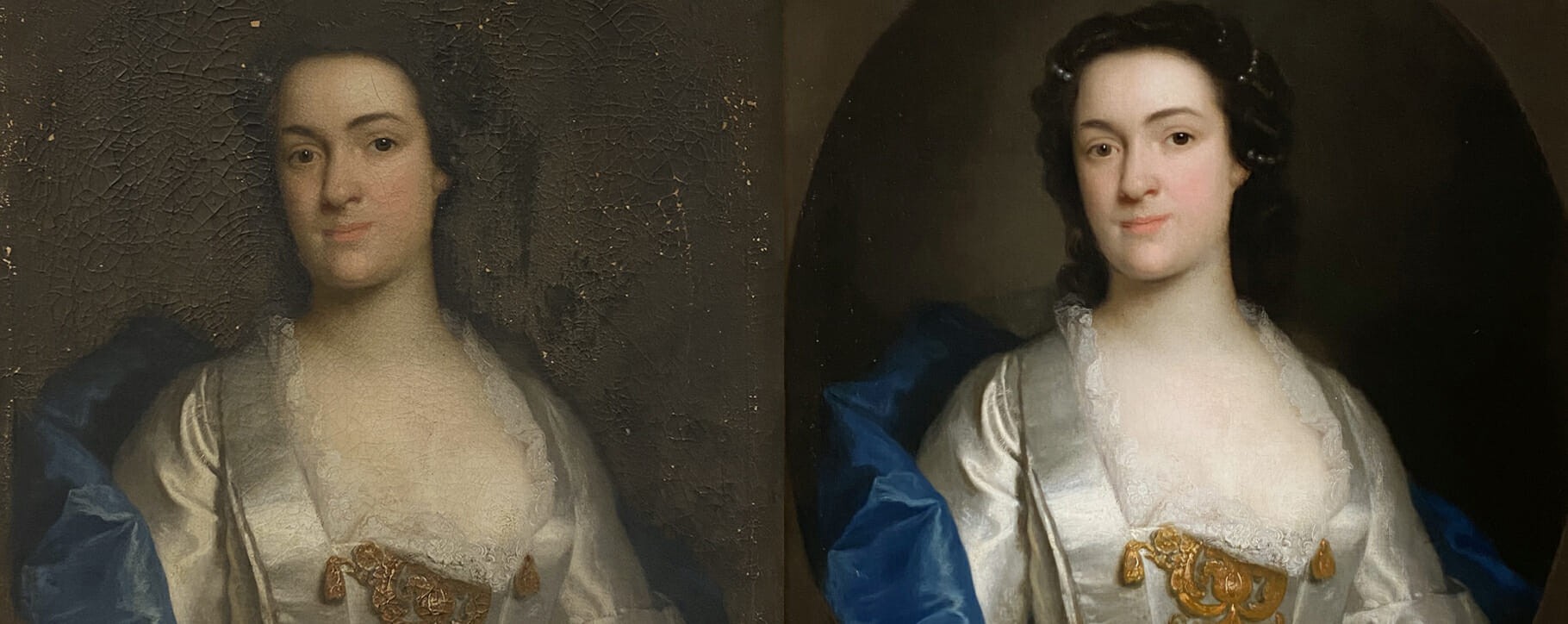 Above: a fire damaged 18th century portrait before and after restoration by our conservators
Above: a fire damaged 18th century portrait before and after restoration by our conservators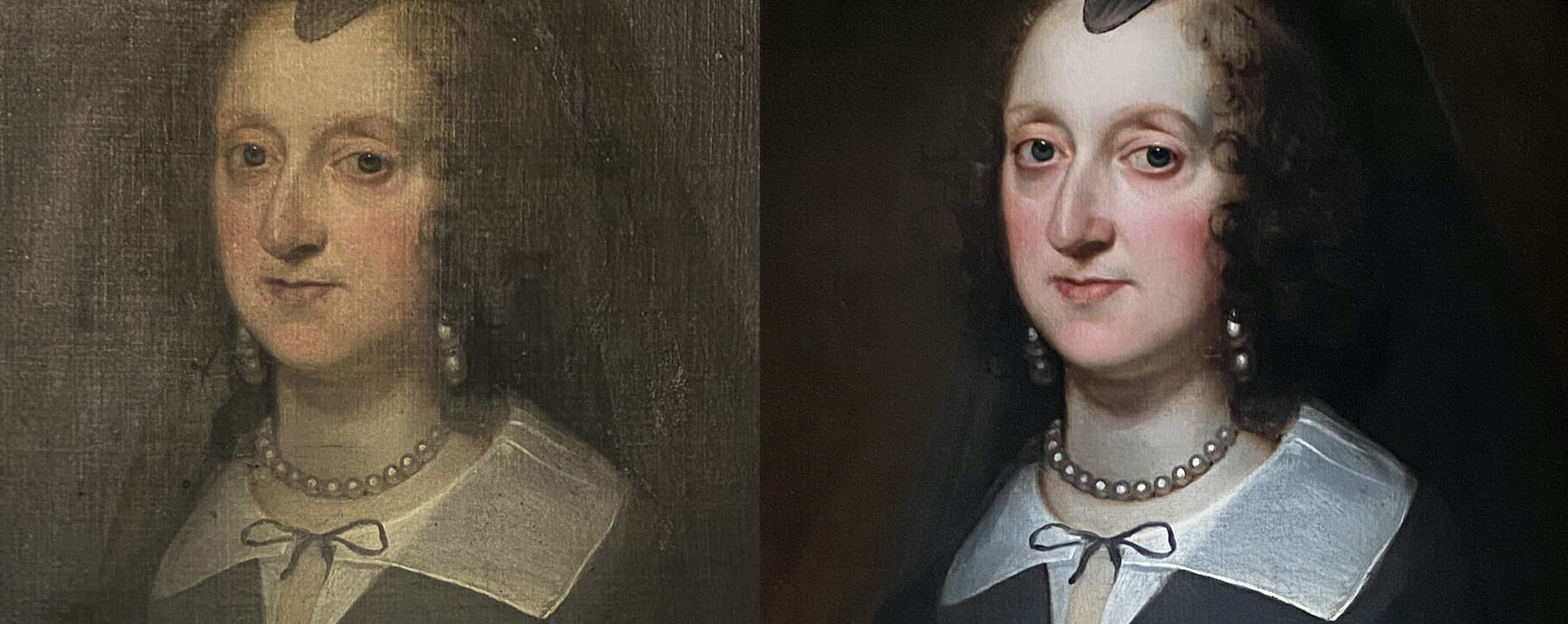 Above: detail of a smoke damaged portrait, before and after restoration by our conservators
Above: detail of a smoke damaged portrait, before and after restoration by our conservators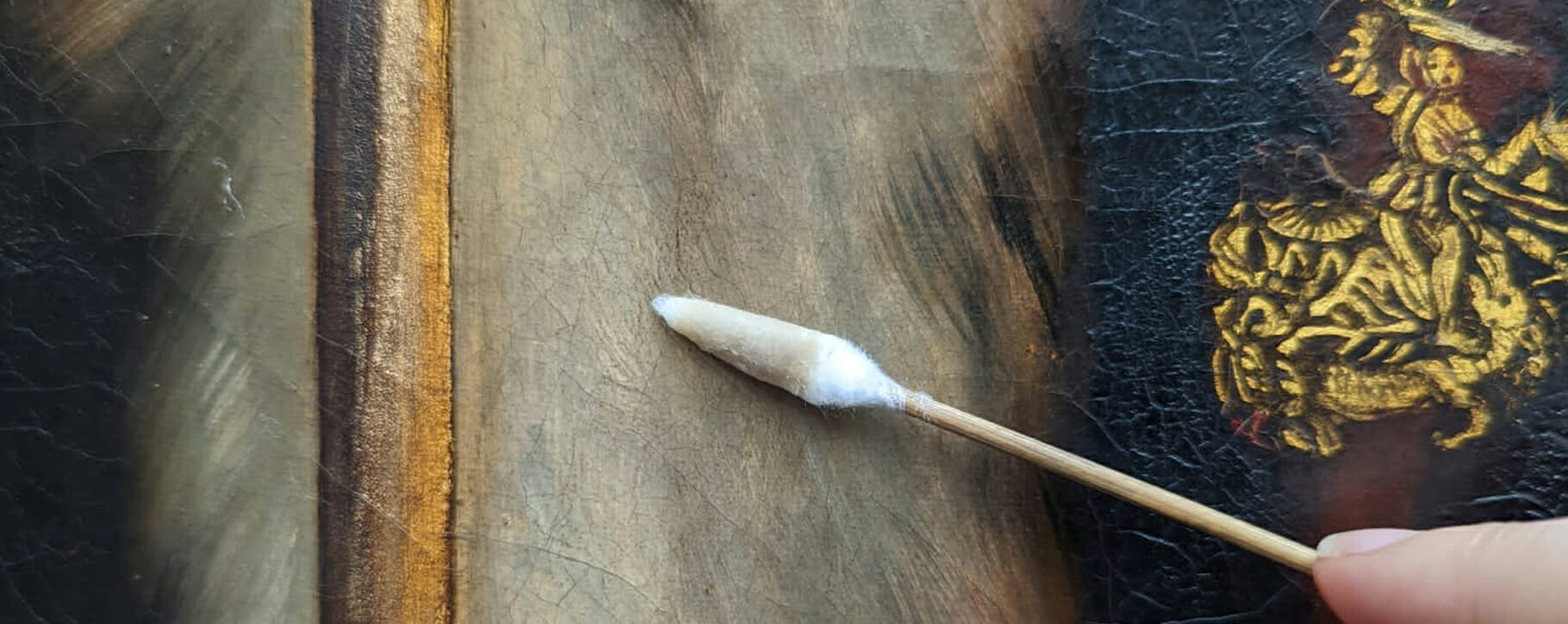 Above: close up of a painting being cleaned in our studio
Above: close up of a painting being cleaned in our studio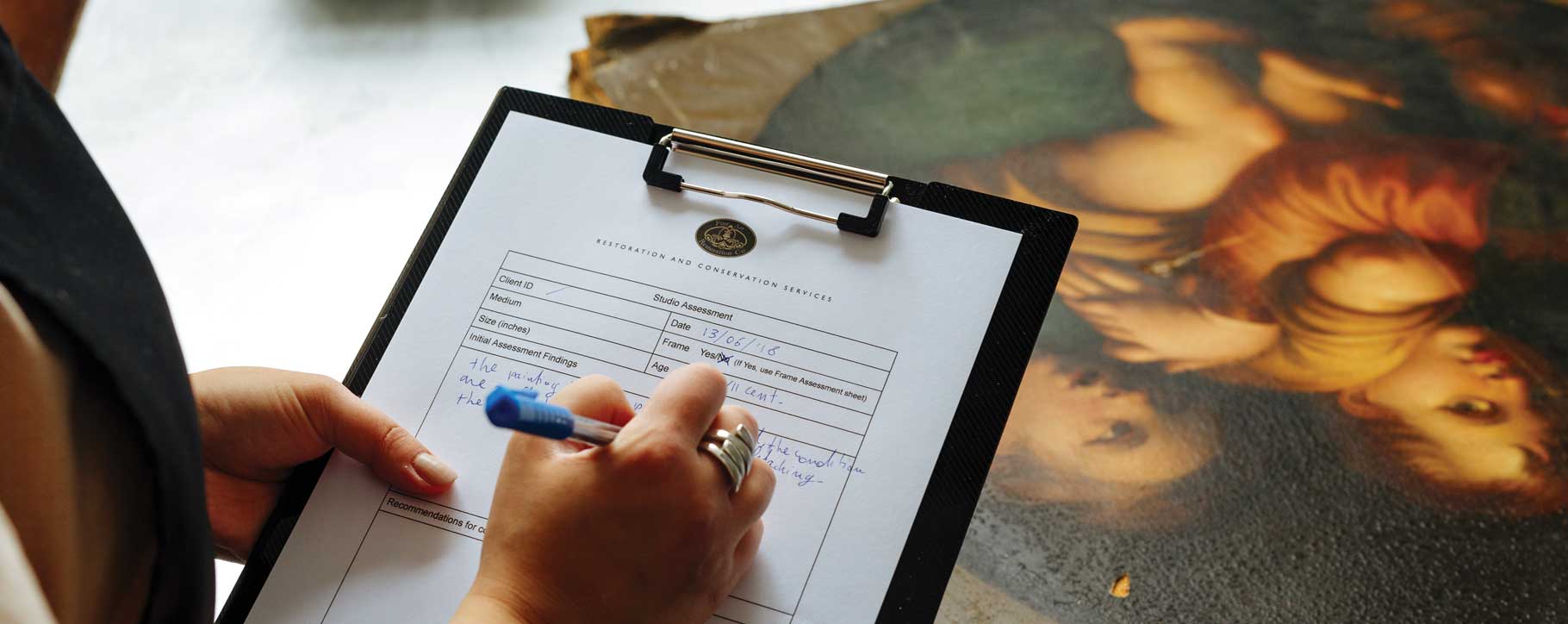 Above: all artworks are assessed prior to conservation treatments being carried out
Above: all artworks are assessed prior to conservation treatments being carried out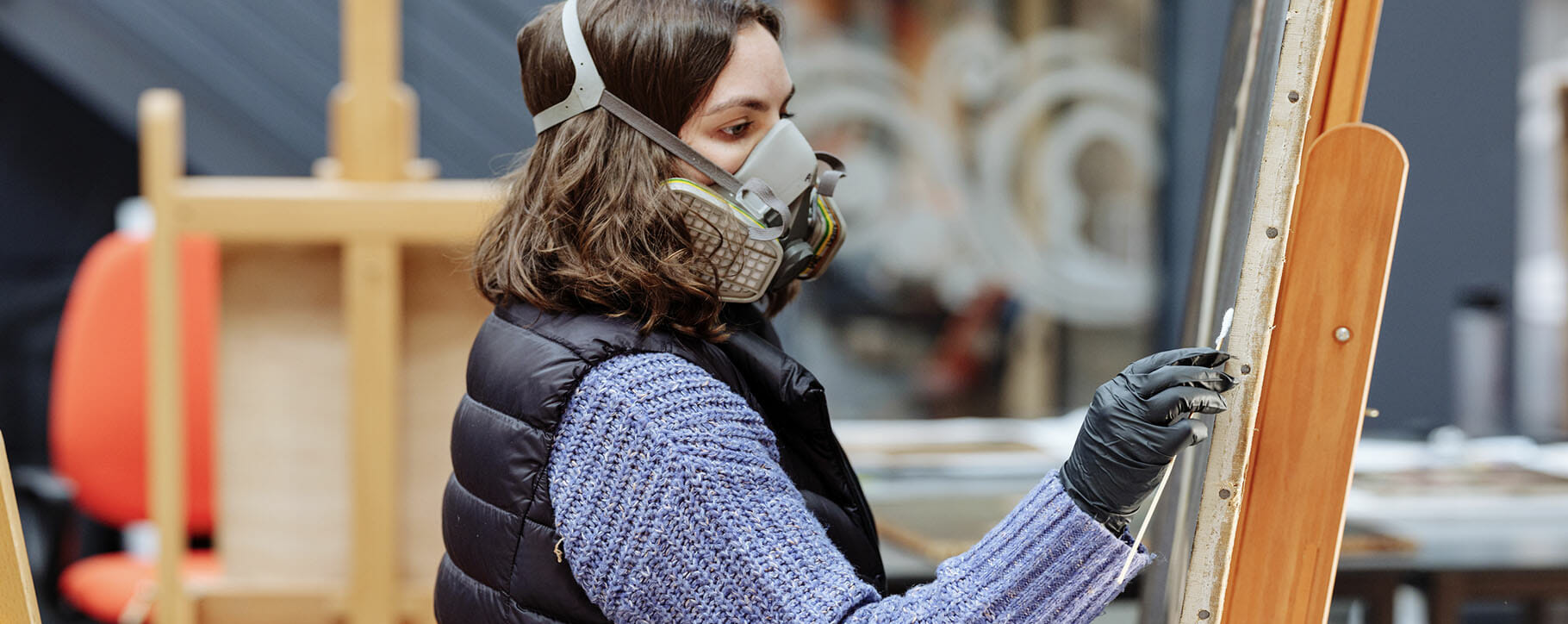 Above: one of our conservators restoring a discoloured oil painting
Above: one of our conservators restoring a discoloured oil painting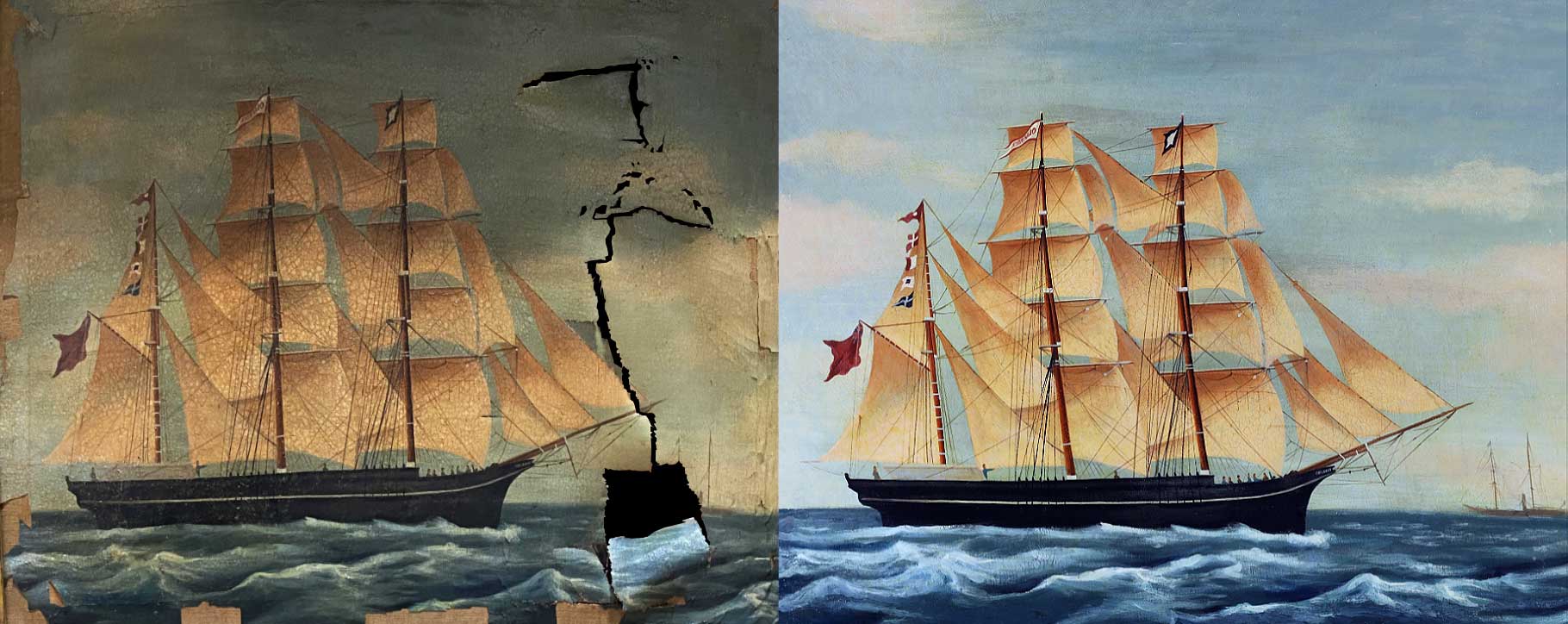 Above: a torn oil painting, before and after restoration by our conservators
Above: a torn oil painting, before and after restoration by our conservators 




